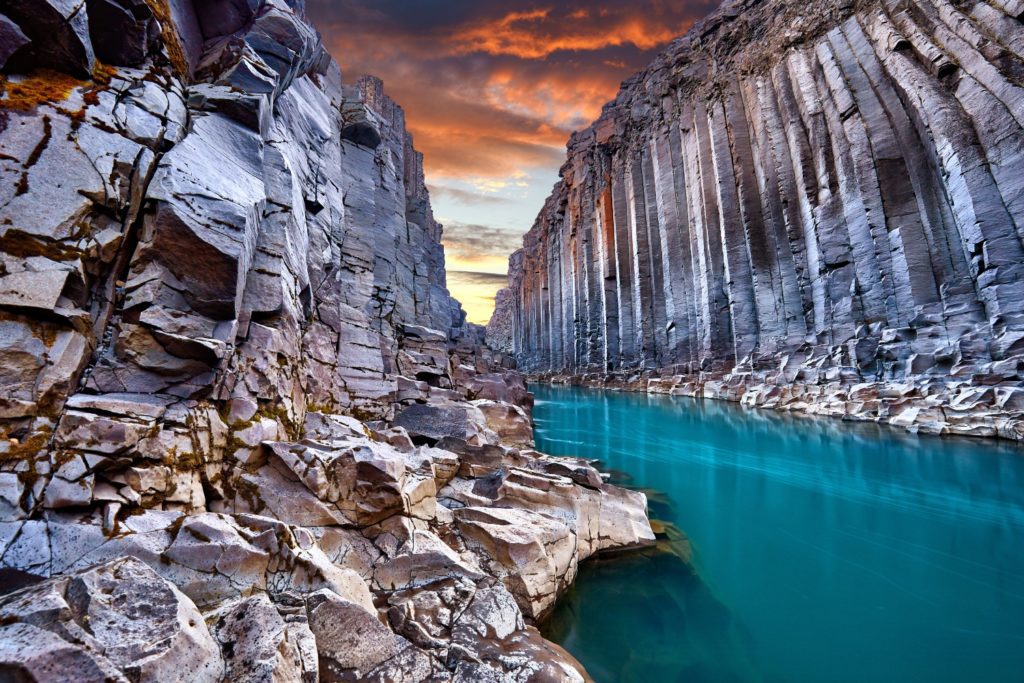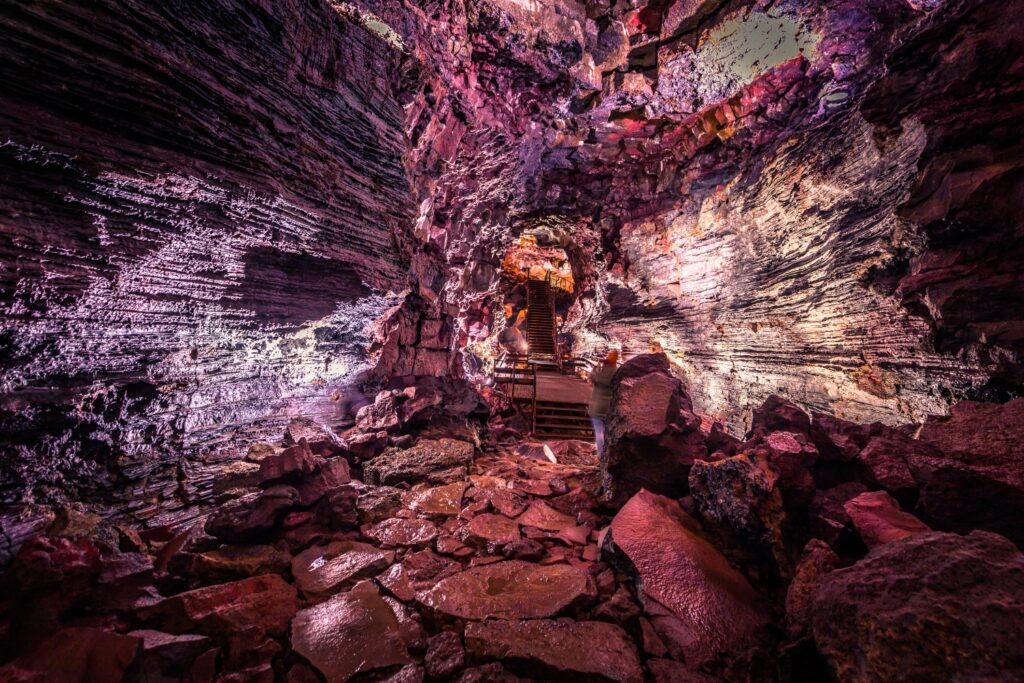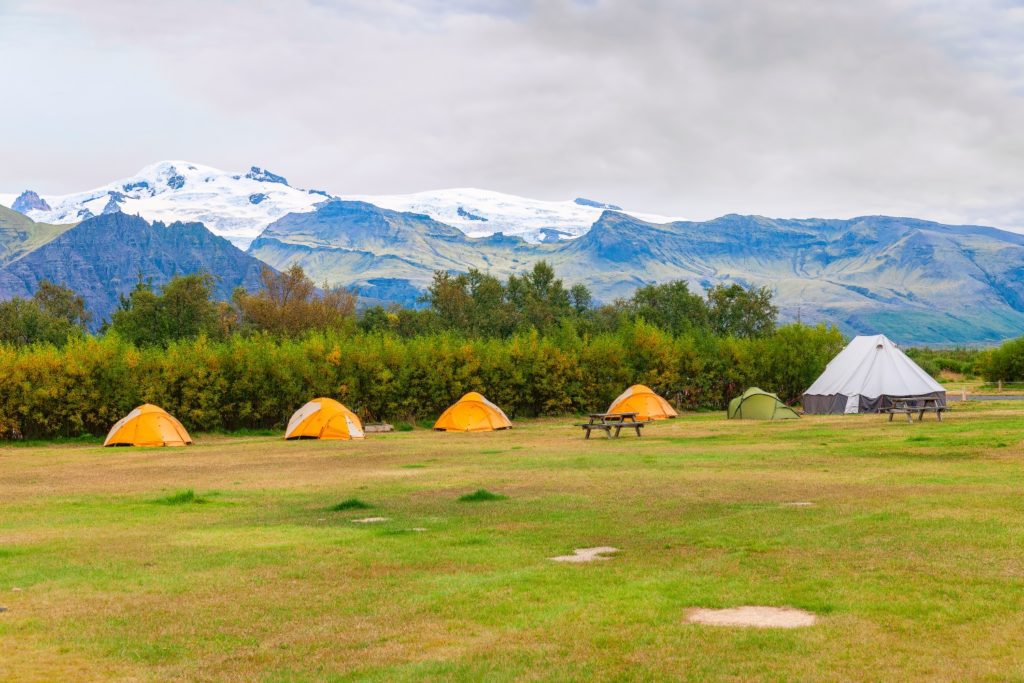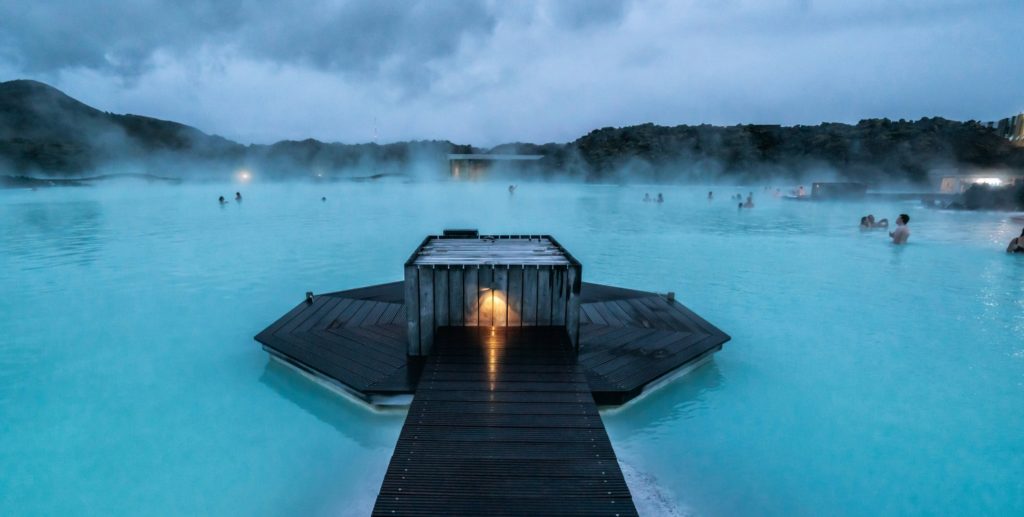June is a great time to visit Iceland. Finally, the rugged, rural roads of the Highlands open, giving road-trippers access to Iceland’s wilder side – as long as you hire a 4×4 vehicle. If you plan to stick to the Ring Road, a standard city car will do just fine in summer (but remember to remain vigilant for wandering sheep)!
What weather to expect in June
The June climate is very pleasant (by Icelandic standards) as average temperatures soar to a heady 59°F (15°C) and rainfall hits an annual low. The summer months bring long, bright evenings and less changeable weather. With the sun’s return, landscapes burst into vibrant shades of lush green.
You’ll notice hardy Icelanders tend to dress like it’s 86°F (30°C), even though top temperatures peak at around 68°F (20°C). Some June days can still be chilly (and occasionally damp!), so don’t forget to pack a warm fleece and waterproof jacket.
We’ve chosen our top 10 things to see and do in June. So, whether you’re seeking adventure, wildlife experiences, or some good old summer festival fun – Iceland in June has plenty to offer.
1. Hike the legendary Laugavegur trail
Many of Iceland’s most popular hiking trails are only passable in summer. The legendary Laugavegur Trail typically reopens in mid to late June (dependent on the weather). Selected by National Geographic as one of the 20 Best Hikes in the World, this multi-day 55km hut-to-hut trek is ideal for more experienced hikers. Even if you’re experienced, we still advise booking a Laugavegur Tour with a guide.
The trail is laden with Iceland’s contrasting geological landscapes, including gorges, glaciers, and mountains. Starting in the multi-colored rhyolite Landmannalaugar mountains, the trail ascends to the black rock piles of Hrafntinnusker – before descending to the peaceful shores of Lake Álftavatn. Then the path heads south, through the black-sand deserts of Emstrur, before arriving in the green valleys of Þórsmörk. An added benefit of trekking with a tour guide is discovering the fascinating Icelandic myths and folklore that intertwine with each landscape.
If you drive to Landmannalaugar to begin the trail, please note that this route (the F208) requires a 4×4 vehicle. Contact the Geysir team for advice on vehicle selection – we’ll be happy to help.

For less experienced hikers, Iceland offers a wonderful array of more leisurely strolls that reveal incredible scenery, such as the popular one-hour hike into Stuðlagil Canyon.
2. Ride an Icelandic horse
As you travel through Iceland, you’ll likely see beautiful Icelandic horses – one of the world’s purest horse breeds. Calm and intelligent, the Icelandic horse was initially used for agriculture and transport. Today there are plenty of riding tours on offer, all providing a fun way to explore different areas of Iceland from the comfort of the saddle.
Icelandic horses descend from the animals that arrived with Iceland’s 9th-century settlers. Over time, the breed has adapted to suit the harsh environment, resulting in a sturdy, reliable horse.
Icelandic horses also have a unique gait – known as a tölt. The tölt is a fast but very smooth movement, and Icelanders enjoy beer tölt events, in which Icelandic horses glide so smoothly that riders hold pints of beer without any spillage. We challenge you to try!
3. Witness the midnight sun
June visitors to Iceland enjoy the longest days of the year – the sun is up for 24 hours for several weeks – hence the midnight sun. You might want to pack an eye mask for sleeping, as the sensation of 24-hour daylight can take a little getting used to! At night, the sun is less bright – akin to a continual sunset or dusk – but it doesn’t fully dip below the horizon.
If the Northern Lights feature on your Icelandic wish list, please note that they will not appear at this time of year, but experiencing the midnight sun can be a great alternative. Arrive at a scenic spot just before midnight, bring an alfresco picnic (pack a cozy jumper… it will be chilly), sit back, and bask in the midnight sun.
4. Join the midnight sun run!
If you’re really into experiencing the midnight sun in a particularly memorable way, why not combine it with a run? In Reykjavík, Icelanders and visitors converge for the annual midnight sun run. With various distances, from 5km to a half marathon, this event is open to the whole family and all abilities.
Once you’ve crossed the finish line, you can soak and recover at a pool party held at Laugardalslaug swimming pool, the city’s largest pool complex, including hot tubs, a steam bath, and two water slides.
5. Explore a lava cave

Lava caves (inaccessible in winter due to thick ice formation) reopen each June, offering the chance to explore breathtaking underground labyrinths formed thousands of years ago by volcanic eruptions.
Each lava cave is a powerful illustration of how Iceland’s landscape was forged in fire. Please book a guided cave tour, as it’s vital to be accompanied by an expert guide for safety reasons. They will also know exactly where to find stunning examples of layered lava and colorful minerals.
Raufarhólshellir and Leidarendi caves are relatively close to Reykjavik, but you’ll find more tours across Iceland – making a lava cave experience a flexible addition to your self-drive itinerary.
6. Enjoy a camping adventure
Whether you’re planning a camper-vanning adventure or want to sleep under canvas, Iceland’s summer months are ideal for camping.
Sleeping under the stars in landscapes with minimal light pollution is a memorable highlight of any Icelandic escape. With over 200 campsites available, you can stay in the heart of some of the country’s most scenic vistas.
We advise researching sites before you arrive and booking ahead, as campsites can get quite crowded during the summer months. Use Tjalda or Camping Card, which both locate nearby campsites and summarise their facilities. Bear in mind that the range of amenities will vary. Most sites offer showers and cooking facilities, and some include laundry rooms, swimming pools, and outdoor activities such as fishing or horse riding to keep families well-entertained.
Check out our Guide to Camping in Iceland for tips on planning a successful camping trip.

7. Snowmobile in the summer
One of the great things about Iceland is that around 11% of the land is permanently covered by glaciers (269 named glaciers, to be precise). So, even in June, you can still try snowmobiling – a must-do activity for all adrenaline seekers.
Snowmobiling is truly exhilarating, and you can’t beat experiencing this fun form of transport when you travel surrounded by stunning glacial landscapes, mountains, and volcanic peaks. Langjökull Glacier in West Iceland is very popular for snowmobiling and well located in terms of linking up with the Golden Circle road trip route.
8. Feel the festival vibes
Every year, Icelanders look forward to a bundle of summer festivals and celebrations, starting with Sjómannadagurinn (Fishermen’s Day), held on the first Sunday of June. This family-friendly festival celebrates Iceland’s strong cultural connection to the sea. It’s also a time to remember Icelanders who lost their lives at sea – sadly, a common occurrence in the 19th and early 20th centuries.
Later in the month, there’s Independence Day, a national holiday held on 17 June. This is an important date for Icelanders as it celebrates the foundation of the Republic of Iceland in 1944, after gaining independence from Denmark.
Hot on the heels of Independence Day is the midsummer solstice (21 June), typically celebrated with bonfires and parties across Iceland. Why not get tickets for the popular Secret Solstice – a Reykjavík music and culture event – and party under the midnight sun? Described as a festival with an Icelandic twist – think raving in a glacier cave or performances in a 5000-year-old lava tunnel for an idea of what the ‘twists’ might be.
9. Chill out in a hot spring

What could be more authentically Icelandic than relaxing in a natural hot spring in the middle of nowhere, watching the sunset glow of the midnight sun?
Natural hot springs are scattered everywhere across the island, and while some are well known, others remain well-kept secrets, with just a handful of individuals knowing their exact location. If you’re hiring a car in Iceland in June, heading out on a hot spring hunt makes for a fun adventure.*
You’ll also find plenty of geothermally heated public swimming pools in cities and towns. Reykjavik alone has nine public swimming pools – all beautifully kept and a great place to unwind after a long road trip! Opening hours for geothermal pools extend in June, as Icelanders make the most of the warmer temperatures and longer daylight hours.
*Remember that some hot springs are on private property and require the landowner’s permission to bathe.
10. Watch out for whales
During the summer months (June to August), wildlife flocks to Iceland’s shores, including migratory birds (puffins, oystercatchers, teals, and great skuas) and, of course … whales.
Icelandic waters are home to 12 different types of whales, including minke, humpback, sperm, and blue whales, so it’s no surprise that many visitors travel to Iceland hoping to encounter these majestic creatures.
Of course, on a whale-watching boat tour, sightings can’t be 100% guaranteed, but you will have a good chance of seeing a diverse range of other species, such as dolphins, porpoises, puffins, gulls, fulmars, gannets, and guillemots.
As you can see, the only problem with traveling to Iceland in June is deciding which activities to fit into your itinerary… as you could easily fill a month and more! Please explore the rest of our blog for more Icelandic adventure inspiration and all our practical tips for planning your road trip.
Back